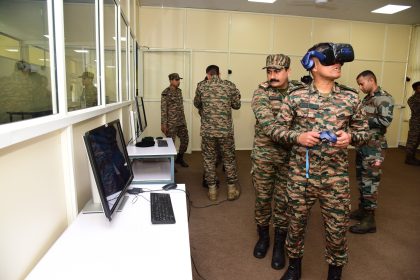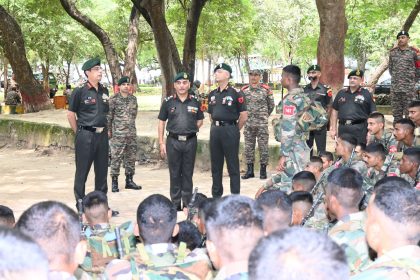Lieutenant General AVS Rathee Reviews Operational Readiness at Dhrangadhra Military Station
During the visit, Lt Gen Rathee interacted with commanders and troops.
Indian Army and Air Force Strengthen Joint Preparedness at Air Force Station Bhuj
The joint training at AFS Bhuj stands as a testament to the armed forces’ dedication to readiness, adaptability, and unified…
SFTS Officers Visit MCEME to Strengthen Synergy in Technical Training
During the visit, SFTS officers received an overview of MCEME’s contributions.
Indian Army Dedicates Indigenous Equipment to Boost Operational Preparedness
The General Officer Commanding (GOC) of the White Knight Corps, based in Nagrota, Jammu and Kashmir, today led a significant…
Indian Army Introduces AI and Drone-Based Training at Grenadiers Regimental Centre
Lt Gen Ajay Kumar Reviews AI-Enabled Drill Nursery, Tech-Tac Room, and Drone Training Lab at Jabalpur.
Air Force Jawan Pulkit Tak Found Dead With Gunshot Wound at Hasimara Air Base in West Bengal
Tragedy Strikes Frontline IAF Base Near India-Bhutan Border.






